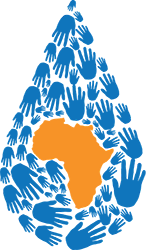The latest on our work and those supporting it
What Does “Water is Life” Mean to You?
Hear powerful reflections from Water, Sanitation, and Hygiene (WASH) professionals whose work shows how water restores health, dignity, and hope.
Why Do People Live Where Water Isn’t Available?
Why don’t people in water-scarce regions “just move”? The real story is far more human — and far more hopeful — than most people realize.
I Grew Up Without Water: What Water Scarcity Steals from Women and Children in Sub-Saharan Africa
Water scarcity once shaped Olivia’s childhood. Now, she’s helping The Water Project bring clean water and dignity to women and children across sub-Saharan Africa.
Not Celebrating Global Handwashing Day Today? It Could Be a Sign of Your Privilege
Most Americans don’t celebrate Global Handwashing Day. Here’s why Americans don’t wash their hands enough — and why handwashing is a bigger deal elsewhere.
Damaged Gutters Threatened Junior’s Education. How We Brought the Water Back
When a school’s rain tank broke, students like Junior were left without safe water. See how quick action turned frustration into hope.
Field Officers: Amateur Photographers, Master Humanitarians
While many people might see photography and humanitarian work as unrelated, for our field officers, they’re inseparable.
The Numbers Behind Reliable Water Access: Inside Our Monthly Indicator Tracking
TWP uses monthly data to track water point functionality, reduce downtime, and improve design—ensuring reliable water access across sub-Saharan Africa.
The Problem We Didn’t Know AI Could Solve (But It Did)
The Water Project used AI to quickly build an app that ensures safe, accurate chlorine dosing for wells, improving water safety for communities.
What Life is Like When Water is Scarce: A Personal Story of Water Rationing
Water rationing in urban Kenya affects daily life and health. Olivia shares her story—and her hope—for communities still waiting for safe, reliable water.
What makes a water project sustainable?
Learn what makes a water system—not just a project—sustainable, and how The Water Project ensures lasting safe water access in vulnerable communities.










